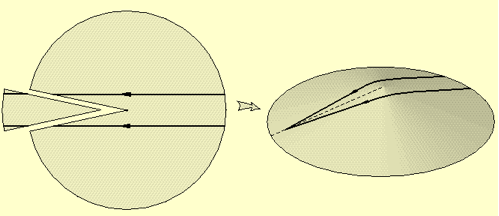Cosmic strings and large-scale structure
The motivation
One of the outstanding problems in cosmology today is developing a more precise understanding of structure formation in the Universe, that is, the origin of galaxies and other large-scale structures. Existing theories for the structure formation of the Universe fall into two categories, based either upon the amplification of quantum fluctuations in a scalar field during inflation, or upon a symmetry breaking phase transition in the early Universe which leads to the formation of topological defects. While techniques for computing density perturbations for the former are well established, only little quantitative work exists for the latter due to calculational difficulties in modelling nonlinear effects, especially for cosmic string models.
We know that topological defects are an inevitable consequence of unification theory during the symmetry breaking. Among other defects, cosmic strings have been proved to be the most potential one for cosmic structure formation. The cosmic string scenario predated inflation as a realistic structure formation model, but it has proved computationally much more challenging to make robust predictions with which to confront observations. Only until recently, significant progress in understanding cosmic strings as seeds for large-scale structure and Cosmic Microwave Background (CMB) anisotropies has been achieved.
The mechanism

Conical spacetime around a cosmic string
Cosmic strings appear in the form of carrying energy, resulting from the symmetry breaking phase transition in the early Universe. Through gravitational interactions, they serve as seed of structure formation attracting their neighbouring matter. In terms of relativity (see the picture to the right), we can see the geodesic path of light curved towards a string when light passing by it. When strings evolve scaling from smaller scales to larger ones, they seed perturbations into the matter energy density of the Universe.
Simulations
To investigate the structure formation by cosmic strings, we first perform high-resolution simulations to obtain the evolution history of cosmic strings:
We then use this set of string networks to serve as the gravitational source seeding perturbations into the matter energy density of the Universe:



Figure 1. (left) A snapshot of cosmic string network in a high-resolution simulation
Figure 2. (centre) Structure formation (CDM) by cosmic strings: the distribution of matter energy density of the Universe (box size: 128Mpc/h; 2D projection)
Figure 3. (right) Structure formation (CDM vs. HDM) by cosmic strings the distribution of matter energy density of the Universe (box size: 128 Mpc/h; 2D projection)


